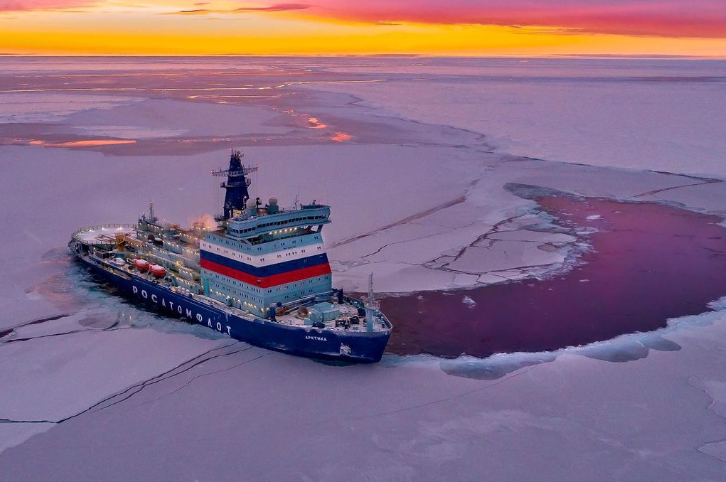1,002 vessels were given permits for navigation in NSR waters
 In January-November, cargo traffic on the Northern Sea Route (NSR) totaled 29.2 million tonnes, which is 4.2% more, year-on-year, Federal Marine and River Transport Agency (Rosmorrechflot) posted on its official Instagram profile with reference to the Northern Sea Route Administration.
In January-November, cargo traffic on the Northern Sea Route (NSR) totaled 29.2 million tonnes, which is 4.2% more, year-on-year, Federal Marine and River Transport Agency (Rosmorrechflot) posted on its official Instagram profile with reference to the Northern Sea Route Administration.
Transit cargo traffic on the Northern Sea Route (NSR) totaled 1.28 million tonnes (+83.7%, year-on-year).
In the reporting period, 1,002 vessels were given permits for navigation in the water area of the Northern Sea Route (+26.8%, year-on-year). The figure includes 156 permits granted to foreign flagged ships (+54.5%, year-on-year).
More than 75% of NSR waters are covered with ice with average thickness of about 30 cm. There is still no ice in the western and northern parts of the Kara Sea as well as the open part of the Chukchi Sea. There is a threat of icebergs near the Cape Zhelaniya and at the approaches to the Vilkitski Strait.
Icebreaker assistance in the Northern Sea Route are provided by nuclear-powered icebreakers Arktika and Vaigach. At the port of Dudinka and on the Yenisey river, icebreaker assistance is provided by the Dudinka icebreaker, at Sabetta port – by the Ob and Dickson icebreakers.
The Saint-Petersburg icebreaker entered the NSR waters on November 29, nuclear-powered icebreaker Yamal – on November 30, They will operate in Sabetta.
Cargo traffic on the Northern Sea Route can exceed 31 million tonnes in 2020, Director General of ROSATOM Aleksey Likhachev said at the ceremony for the delivery of the lead nuclear-powered icebreaker of Project 22220, the Arktika, to FSUE Atomflot.
Related links:
NSR cargo traffic grew by 2.9% in 10M’2020>>>>
1.28 million tonnes of transit cargo carried by Northern Sea Route in 10M’2020>>>>
NSR cargo traffic to exceed 31 million tonnes in 2020 – Aleksey Likhachev>>>>



